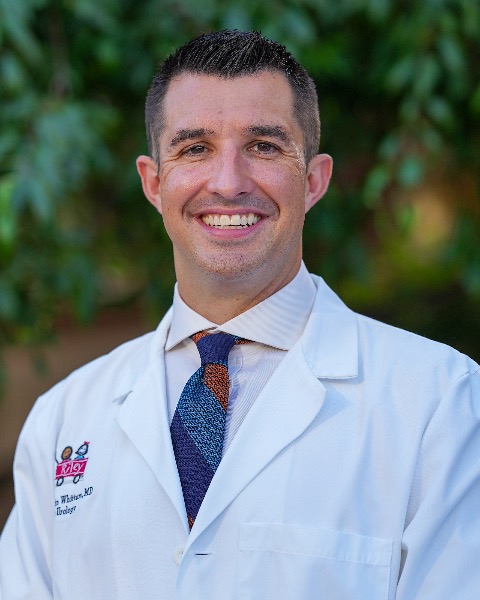Original Research
Program: Section on Urology
O2180: The Randomized ROBOT Study, a Pilot Comparative Effectiveness Trial for Robotic Assisted Laparascopic vs. Open Pyeloplasty in Children
Saturday, October 21, 2023
11:35 AM - 11:40 AM US EDT
Location: H2016: Section on Urology Program: Day 2
Background: Robotic assisted laparoscopic (RAL) surgery continues to gain popularity among pediatric surgical specialists, particularly for reconstructive procedures such as correction of ureteropelvic junction obstruction (UPJO) or vesicoureteral reflux (VUR). Since traditional open surgery yields a nearly 95% clinical success rate, it is difficult to determine which approach is most advantageous to patients. Despite excellent clinical outcomes with the open approach, many pediatric urologists are shifting towards newer RAL approaches, claiming faster recovery and improved cosmesis with a nominal increase in surgical cost in the absence of evidence from blinded randomized controlled trials (RCTs). We designed a pilot comparative effectiveness trial of open versus robotic pyeloplasty in pediatric patients.
Methods: Non-obese ( < 95th% BMI for age) patients age 2 – 8 years old diagnosed with a UPJO were approached by a research assistant regarding enrollment into the RCT. Upon signing consent, patients were randomized to OP or RALP and scheduled for surgery. The surgical team was blinded as to the randomization assignment until the morning of the scheduled operation. Intraoperatively, patients underwent cystoscopy, retrograde pyelogram and retrograde stent placement with extraction string, then underwent either open or robotic pyeloplasty with a similar transversalis plane block by anesthesia and the same dressings were applied. Patients, families and nursing staff were blinded as to the approach used for the first 24 hours postoperatively. We then assessed our primary outcomes of pain scores with each nursing assessment, total length of stay.
Results: Over a 16 month period, 11 patients met inclusion criteria and 10 agreed to randomization (91%): 5 underwent open pyeloplasty and 5 robotic pyeloplasty. All patients were symptomatic with flank pain and associated nausea/vomiting. Mean age was 5.4 years, 7 were male, and had an average BMI of 16.7kg/m2. UPJO was right-sided in 4 patients (with one solitary kidney).
On exit interview at 24 hours after surgery, blinding was deemed adequate by families and nursing staff, with only 40% of nurses and families correctly identifying the procedure. There were no intraoperative complication and one 30 day Clavien Dindo 3b complication (a stent removal in the operating room secondary to internal migration of his extraction string). At last follow-up, all patients remained asymptomatic with stable or improved hydronephrosis.
Conclusion: We successfully randomized and blinded 10 children to undergo either open or robotic surgery. Using current recruitment strategy and expanding inclusion criteria, we are planning a multi-institutional comparative effectiveness trial comparing open to robotic pyeloplasty in the pediatric population.
Methods: Non-obese ( < 95th% BMI for age) patients age 2 – 8 years old diagnosed with a UPJO were approached by a research assistant regarding enrollment into the RCT. Upon signing consent, patients were randomized to OP or RALP and scheduled for surgery. The surgical team was blinded as to the randomization assignment until the morning of the scheduled operation. Intraoperatively, patients underwent cystoscopy, retrograde pyelogram and retrograde stent placement with extraction string, then underwent either open or robotic pyeloplasty with a similar transversalis plane block by anesthesia and the same dressings were applied. Patients, families and nursing staff were blinded as to the approach used for the first 24 hours postoperatively. We then assessed our primary outcomes of pain scores with each nursing assessment, total length of stay.
Results: Over a 16 month period, 11 patients met inclusion criteria and 10 agreed to randomization (91%): 5 underwent open pyeloplasty and 5 robotic pyeloplasty. All patients were symptomatic with flank pain and associated nausea/vomiting. Mean age was 5.4 years, 7 were male, and had an average BMI of 16.7kg/m2. UPJO was right-sided in 4 patients (with one solitary kidney).
On exit interview at 24 hours after surgery, blinding was deemed adequate by families and nursing staff, with only 40% of nurses and families correctly identifying the procedure. There were no intraoperative complication and one 30 day Clavien Dindo 3b complication (a stent removal in the operating room secondary to internal migration of his extraction string). At last follow-up, all patients remained asymptomatic with stable or improved hydronephrosis.
Conclusion: We successfully randomized and blinded 10 children to undergo either open or robotic surgery. Using current recruitment strategy and expanding inclusion criteria, we are planning a multi-institutional comparative effectiveness trial comparing open to robotic pyeloplasty in the pediatric population.

Benjamin Whittam, MD, MS
Riley Hospital for Children at IU Health
Indianapolis, Indiana- RM
Rosalie Misseri, MD, MS
Professor of Urology
Riley Hospital for Children at IU Health
Indianapolis, Indiana

.png)
